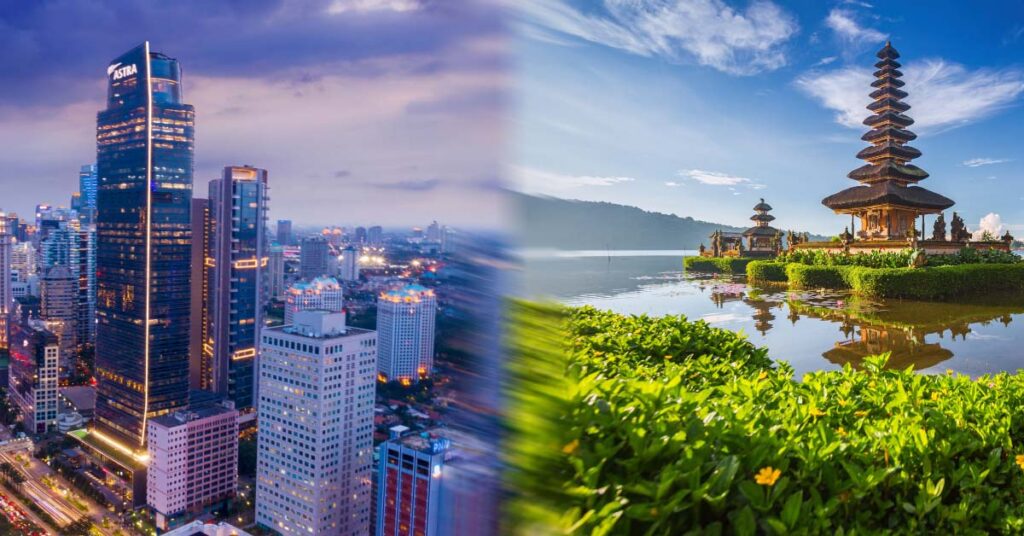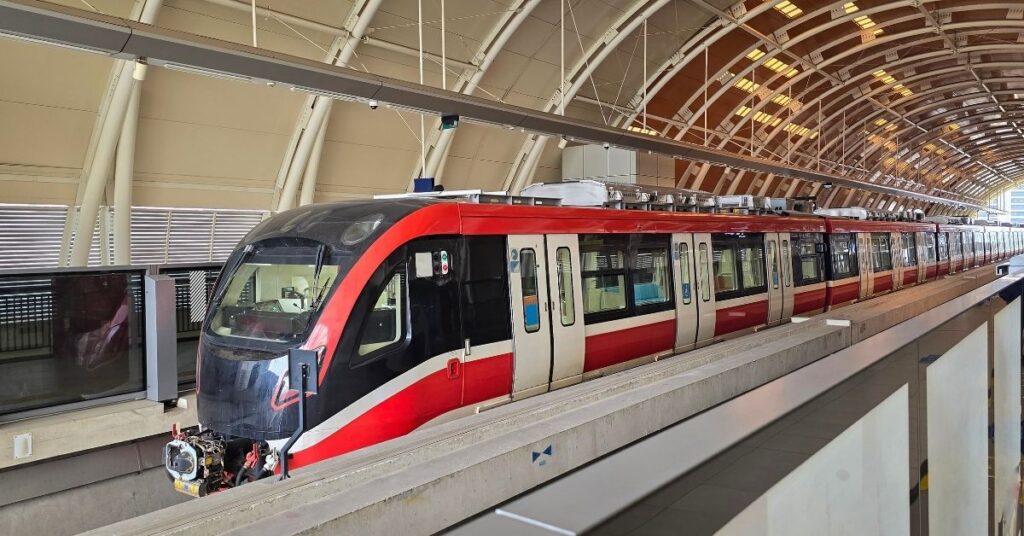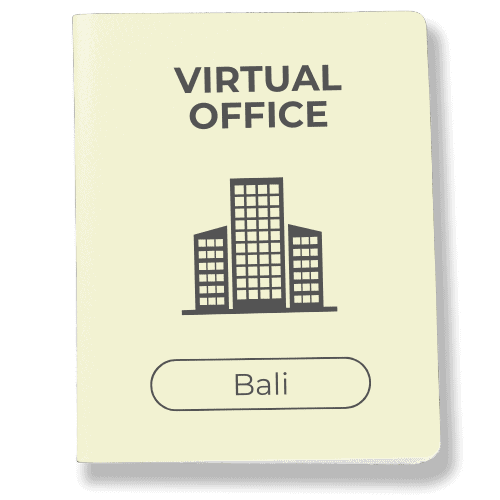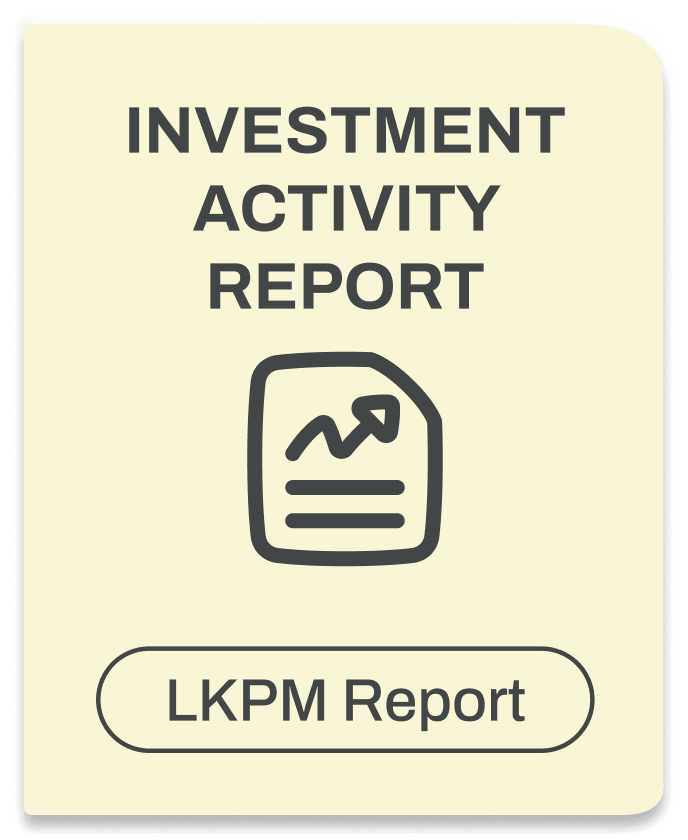Jakarta or Bali? The Ultimate Pros/Cons List for 2025 Trips

Look, you’re staring at a map of Indonesia, and two destinations keep jumping out: Jakarta or Bali. One’s a huge city with 10 million people and train lines crisscrossing what’s technically still the capital city. The other’s the beautiful island everyone pictures when they think “tropical paradise.” Both are in Indonesia. Both are amazing. But they’re wildly different travel experiences.
So which one should you visit? Or, plot twist, should you do both Bali and Jakarta?
Let’s figure it out together. I’ll walk you through costs, seasons, what you’ll actually do in each place, and how to get around without getting stuck in a traffic jam. By the end, you’ll know exactly where to book your trip.
TL;DR: Quick Decision Matrix (by traveler type)
Beach & water sports: Bali | Jakarta (Ancol/Thousand Islands day trips)
Foodie & nightlife (urban): Jakarta | Bali
Culture & heritage: Tie, different things , Temples & dance (Bali) vs museums, old city, Istiqlal/Cathedral, Chinatown (Jakarta)
Budget: Jakarta slightly cheaper on average; Bali offers better value for resorts.
Mobility: Jakarta’s public transportation with MRT + TransJakarta (growing); Bali = scooters/rideshare, traffic varies.
What’s New for 2025 (Matters for Your Trip)
Bali Tourist Levy: As of 2024, most visitors to Bali pay tourist tax 150,000 IDR per visit (about $10 USD). You can pay online through the “Love Bali” website before you land, or settle up at the airport. It’s quick, but don’t skip it, immigration checks for the receipt.
Capital headlines explained: You might’ve seen news about Indonesia moving its capital city to Nusantara, a brand-new modern city being built in East Kalimantan (Borneo). That’s true, Nusantara is the designated political capital, and construction will roll through the late 2020s.
But here’s what matters for your trip: you can still visit Jakarta as the day-to-day business hub, the economic engine, and the place where all the embassies, corporate headquarters, and urban buzz live. Nothing’s changed on the ground for travelers yet.
Costs at a Glance (What Your Money Buys)

Let’s talk real numbers, because “Indonesia is cheap” is too vague to help anyone.
Traveler-reported averages put Jakarta at around $74 per person per day, and Bali at about $85, assuming you’re sharing a room. That includes accommodation, food, local transport, and a couple of attractions.
But averages lie a little. Here’s what your money actually buys:
Jakarta
- Budget room (guesthouse or basic hotel): $15–$25/night
- Mid-range hotel (clean, central, AC that works): $40–$70/night
- Street food meal (nasi goreng, martabak, satay): $1–$3
- Sit-down restaurant (local or casual): $5–$10
- Fancy dinner (rooftop bar, international brands): $20–$40
- MRT/TransJakarta ride: $0.30–$0.50
- Rideshare across town: $3–$8
- Museum entry: $1–$3
Bali
- Budget guesthouse (fan room, shared bathroom): $10–$20/night
- Mid-range hotel or villa (pool, breakfast): $50–$100/night
- Warung meal (nasi campur, mie goreng): $2–$4
- Beach club lunch (FINNS, Potato Head): $15–$30
- Nice dinner (Seminyak/Ubud): $20–$50
- Scooter rental (per day): $5
- Rideshare (short trip): $2–$5
- Temple entry: $1–$5
- Surf lesson or snorkeling trip: $30–$60
What $100/day feels like in each place
Jakarta: You’re staying in a solid mid-range hotel ($50), eating one street food meal ($3) and one nice sit-down dinner ($15), taking a museum tour or exploring the old city ($5), and bouncing around on the MRT and rideshares ($7). You’ve got $20 left for coffee, snacks, or a rooftop drink.
Bali: You’re in a cute guesthouse with a pool ($35), eating breakfast at a warung ($4), lunch at a beach club ($20), and dinner somewhere Instagrammable ($25). You rent a scooter ($5) or take a couple of rideshares ($6), and visit a temple or waterfall attraction ($5). You’ve got $5 left for a coconut on the beach.
Both are totally doable and cheap by most travelers’ standards. Jakarta just skews a little lower on cost unless you’re chasing luxury, and Bali offers more “vacation” vibes for your dollar.
When to Go
Indonesia straddles the equator, so it’s warm year-round. But timing still matters, a lot.
The dry season runs roughly from April through October. Skies are clearer, humidity’s lower, and you won’t spend half your day dodging rain. This is peak season in Bali, so expect crowds and higher prices, especially July–August. Jakarta’s busy year-round (it’s a working city), so dry season just means fewer sudden downpours during your commute.
Wet season is from November through March. It doesn’t rain all day, but expect afternoon thunderstorms that can flood streets and turn Bali’s dirt roads into mud. On the upside, everything’s greener, waterfalls are roaring, and you’ll find plenty of better deals. If you’re flexible and don’t mind an umbrella, it’s not a bad time to visit.
Surf seasons in Bali flip depending on the coast. West coast (Canggu, Seminyak, Uluwatu) is best April–October. East coast (Sanur, Nusa Dua) picks up in November–March when the west goes flat.
Nyepi (Balinese New Year, usually March) is a “Day of Silence.” The entire island shuts down, no flights in or out, no driving, no noise, no lights. Hotels stay open, but you’re confined to your property. It’s a fascinating cultural experience if you plan for it, but a logistical nightmare if you don’t.
Ramadan in Jakarta (dates shift yearly; in 2025, it’s roughly late February through late March) means some of the best restaurants close during daylight hours, and traffic gets wild right before sunset when everyone’s rushing home to break fast. Evenings, though, come alive with night markets and special food. Just adjust your schedule and you’ll be fine.
Volcano visibility: If you’re doing the Java overland route (more on that later), dry season gives you clearer sunrise views at Mount Bromo and Ijen. Those peaks are worth the 3 a.m. wake-up call, but only if you can actually see them through the clouds.
Experiences: Head-to-Head
Let’s compare what you’ll actually do in each place. Here’s how Jakarta and Bali stack up across the experiences most travelers care about.
Beaches & Water
Bali is the obvious winner when most people think about beautiful beaches and water sports. The south coast alone gives you options: Uluwatu’s dramatic cliffs and world-class surf breaks, Nusa Dua’s calm, resort-lined bays, Sanur’s family-friendly shallows. Head to the Nusa Islands (Nusa Penida, Nusa Lembongan) for snorkeling and jaw-dropping coastal views. Or point your scooter north to hidden waterfalls and black-sand beaches. This is the natural beauty Bali’s famous for.
Jakarta isn’t a beach destination, it’s built on swampy lowlands and the coast is industrial. But the Thousand Islands (Kepulauan Seribu) make great day trips. Take a speedboat from Ancol (1–2 hours), and you’ll find white sand, decent snorkeling, and quiet island resorts. It’s not Bali, but it’s a solid weekend escape if you’re based in Central Jakarta.
Winner: Bali, no contest. But Jakarta’s got a workaround if you need a beach fix during your visit.
Nature & Outdoor
Bali delivers on natural beauty: rice terraces in Ubud that look like postcards, waterfalls tucked into jungle valleys (Tegenungan, Sekumpul), sunrise hikes up Mount Batur. You’re never far from something green and gorgeous on this beautiful island.
Jakarta itself is concrete and traffic. But if you’re doing a Java overland trip, you’re in volcano country. Mount Bromo’s alien landscape and sulfur-blue flames at Ijen are some of the most dramatic attractions in Southeast Asia. You just have to commit to the journey, this isn’t a day trip from Jakarta.
Winner: Bali for convenience, Java for jaw-dropping extremes if you’re willing to travel.
Culture & Heritage
Bali is temple central. Tanah Lot perched on a rock in the sea, Uluwatu on a cliff at sunset, Tirta Empul’s holy spring pools, every corner has a shrine. Traditional dance performances (like the Kecak fire dance) happen nightly. The island’s Hindu culture is woven into daily life, which is one of the big reasons many travelers visit Bali.
Jakarta gives you a different lens on Indonesian culture: the National Museum unpacks Indonesia’s 17,000-island story, Kota Tua (the old city) preserves Dutch colonial architecture and museums, and the Istiqlal Mosque, the largest in Southeast Asia, sits across a plaza from Jakarta Cathedral in a powerful symbol of coexistence. Wander Chinatown (Glodok) for temples, herbal medicine shops, and history layered on history. Walk through Merdeka Square to see where Indonesia declared independence. This huge city is a melting pot of cultures from across the archipelago.
Winner: Tie. Bali’s spiritual and scenic. Jakarta’s urban and layered with different things to explore.
Food & Nightlife
Jakarta is a 24-hour food city. Street vendors grill satay on every corner, night markets sprawl for blocks, and mega-malls hide food courts with 50+ stalls serving food from across Indonesia. Rooftop bars overlook the skyline, clubs bump until dawn, and you can find every regional Indonesian dish plus international brands. Jakarta’s nightlife is what most locals and tourists come for when they want fun after dark.
Bali has incredible restaurants, Seminyak and Canggu are packed with farm-to-table cafes, beach clubs like FINNS and Potato Head, and clifftop spots in Uluwatu serving sunset cocktails. Ubud’s got healthy bowls and vegan everything. It’s more curated, more “vacation dining,” and often pricier than Jakarta. The beach clubs are a huge draw, especially for tourists looking to spend a day by the water with good food and drinks.
Winner: Jakarta for raw, chaotic variety and nightlife. Bali for polished, beachy indulgence at the best restaurants and clubs.
Wellness & Remote Work
Bali built its reputation here. Ubud’s yoga studios, sound healings, and wellness retreats are everywhere. Canggu’s packed with digital nomads, coworking spaces, fast wifi, and cafes designed for laptop work. You’ll find plenty of other travelers living the same lifestyle, making it a great place to connect.
Jakarta has coworking spaces near the MRT (especially around Sudirman/SCBD) and solid wifi in business districts. It’s convenient if you’re mixing work with city exploration, but it’s not the “wellness retreat” vibe most people seek when they visit.
Winner: Bali, especially if remote work means laptop on a rice-terrace-view balcony.
Public Transportation
Jakarta wins this one hands-down. The MRT (Phase 1 is live; Phase 2A/2B are extending toward Kota Tua and Ancol in the coming years) is clean, air-conditioned, and reliable. TransJakarta bus rapid transit covers the whole city on dedicated lanes. Add rideshare apps (Gojek, Grab), and you can navigate this modern city without needing to rent a car. The public transport keeps getting better, and it’s one of the big reasons many travelers choose to visit Jakarta without the hassle of driving.
Bali is improving, buses now connect key corridors (Kuta, Seminyak, Sanur, Ubud), but public transportation is still limited. Most visitors rent a scooter, hire a private driver, or rely on rideshare. Some touristy areas (Ubud’s core, Sanur beachfront) are walkable, but you’ll need wheels for most trips. Traffic jams in Seminyak and Canggu can be brutal, especially at night.
Winner: Jakarta. If you don’t want to drive or rent a scooter, Jakarta’s infrastructure has your back.
Getting Around (No-stress Logistics)

Transportation can stress you out or set you free. Here’s exactly how to move around Bali and Jakarta without wasting time, money, or sanity.
Bali
Rent a scooter if you’re confident (they’re everywhere, about $5/day, and the freedom is unbeatable). If not, use Gojek or Grab for short hops, or hire a private driver for day trips (around $40–$60 for 8–10 hours). Drivers often double as guides and know where to find the best photo stops and attractions most locals recommend.
Jakarta
Download Gojek or Grab (rideshare and food delivery). Buy a reloadable Jak Lingko card for the MRT and TransJakarta, tap in, tap out, done. The MRT runs roughly 5 a.m. to midnight and you pay about $0.50 per ride. TransJakarta buses are even cheaper. Traffic’s gnarly during rush hour (7–9 a.m., 5–7 p.m.), but the MRT skips the traffic jam entirely. Of course, if you need a car for day trips outside the city, you can rent one or hire a driver.
Walkability: Sanur and Ubud’s central areas are pleasant on foot. Seminyak and Canggu are more spread out and scooter-friendly. Uluwatu’s all cliffs and distant beaches, you’ll need wheels.
Jakarta ↔ Bali: Best Ways to Combine Both
A lot of travelers do both Bali and Jakarta, and honestly? It’s a smart move. These two destinations are only a short flight apart, and seeing both gives you the full Indonesian experience, urban chaos and tropical chill.
Fly
Cheapest and fastest. Flights from Jakarta (CGK) to Bali (DPS) run constantly on budget carriers like AirAsia, Citilink, and Lion Air. Expect to pay $50–$80 for a one-way ticket if you book a few weeks out. Flight time: 1 hour 50 minutes. Done.
Overland across Java (10–14 days)
This is the adventure route, and it’s incredible if you’ve got time and a sense of adventure.
The classic route: Jakarta → Bandung (tea plantations, art deco architecture) → Yogyakarta (temples: Borobudur, Prambanan) → Mount Bromo (sunrise over an alien landscape) → Ijen (blue fire and sulfur miners) → Banyuwangi → ferry to Bali.
Who it’s for: Travelers who want to see Java’s volcanoes, rice terraces, and cultural heartland. You’ll take a mix of trains, private drivers, and minibuses. It’s not luxurious, but it’s unforgettable, a true travel experience across the world’s most populous island.
When to avoid: Rainy season makes roads muddy and visibility poor. Stick to April–October.
Safety notes: Java’s roads can be chaotic. Hire reputable drivers (your guesthouse can arrange), and give yourself buffer time, flat tires and detours happen.
Why not the bus?
Technically, you can take buses from Jakarta to Bali. But it’s a full day’s journey (think 24+ hours) on highways that aren’t exactly smooth. For the same cost as a cramped bus seat, you could fly in under two hours. Save your sanity, spring for the flight.
Where to Stay (Neighborhoods by traveler type)

The neighborhood you pick shapes your entire experience. Here’s where to base yourself depending on what you’re after, whether that’s nightlife, beaches, culture, or just a quiet place to crash.
Jakarta
Menteng: Classic, leafy, and quiet. Tree-lined streets, colonial-era bungalows, cafes. Central but calm, a great place for travelers who want to explore without the chaos.
SCBD/Sudirman: Business district with skyscrapers, malls, rooftop bars, and nightlife. Great if you want the MRT at your doorstep and easy access to Central Jakarta attractions.
Kota Tua: Old city charm, budget guesthouses, museums within walking distance. It’s grittier but full of character, perfect if you want to spend time exploring Jakarta’s history.
Kemang: Expat-heavy neighborhood with international restaurants, craft beer bars, and a more relaxed vibe. Lots of fun for a night out.
Bali
Seminyak: Upscale dining, shopping, beach clubs. Polished and social, where most visitors stay for nightlife and the best restaurants.
Canggu: Surf, cafes, coworking spaces, and a young, nomad-heavy crowd. Scooters everywhere. Great for travelers living the digital nomad life.
Ubud: Rice terraces, yoga, art galleries, and Balinese culture. Inland, so no beach, but cooler and greener. A great place to find plenty of wellness retreats.
Sanur: Quiet, family-friendly, and beachfront. Older travelers and long-term visitors love this town for its calm vibe.
Nusa Dua: Big resorts, calm water, manicured lawns. It’s resort-bubble territory, but perfect for a family vacation.
Uluwatu: Dramatic cliffs, world-class surf, and sunset views. Isolated but stunning, one of the most beautiful parts of the island.
Safety, Etiquette & Local Rules
Indonesia’s generally safe, but use common sense, like you would anywhere in Asia or the world.
Petty theft: Watch your bag in crowded areas, especially Jakarta’s bus terminals and Bali’s beach clubs. Don’t leave valuables on your scooter seat.
Temple dress codes: In Bali, cover your shoulders and knees. Most temples lend sarongs, but it’s polite to bring your own.
Bali levy checkpoints: Keep your 150,000 IDR receipt handy, immigration might check it when you visit.
Alcohol norms: Jakarta’s a Muslim-majority city, so alcohol isn’t as visible as in Bali (though bars and clubs exist). Bali’s more relaxed, especially in touristy areas.
Mosque etiquette in Jakarta: If you visit Istiqlal or other mosques, dress modestly (long pants, sleeves). Remove shoes before entering. Women might be asked to wear a headscarf (often provided).
Bargaining: Expected at markets, not at malls or restaurants with fixed prices. Start at half the asking price and meet in the middle.
What You Need Before You Go
Before you book anything, sort out your visa situation. Indonesia’s visa rules have gotten simpler in recent years, but they vary depending on your nationality and how long you plan to stay.
Visa-free entry (30 days): Citizens from over 90 countries, including the US, UK, most of Europe, Australia, and many others, can enter Indonesia visa-free for up to 30 days. You can’t extend this, and you can’t work on it, but it’s perfect for a short trip covering both Jakarta and Bali.
Visa on Arrival (60 days, extendable): If you need more time or want the flexibility to extend, you can get a Visa on Arrival at the airport for 500,000 IDR (about $32 USD). This gives you 30 days initially, and you can extend it once for another 30 days (60 days total). This is the go-to option for most travelers doing the full Java-to-Bali overland route or planning an extended stay.
Longer stays and multiple trips: If you’re planning to spend more than 60 days exploring Indonesia, the Indonesia Tourist Visa is what you need. It gives you 60 days upfront and can be extended multiple times, letting you stay up to 180 days total. It’s also great if you’re planning multiple trips to Indonesia within the year and want to avoid the hassle of dealing with visa requirements every time you land.
Here’s the thing, Indonesia’s visa rules shift, the website is up and down, and you didn’t come here to wrestle paperwork. Tell us your trip, upload your docs, and we’ll pick the right visa, prep everything, and submit it for you. We then will keep you updated on WhatsApp or email.
Since 2010, we’ve helped 47,222 travelers (with 1,055 visas processed in the last 30 days) and earned 1,834 verified reviews. Fees are clear, steps are simple, and real people answer fast in your language.
Ready to skip the stress and get this done? Start your application now, or chat with a visa specialist on WhatsApp and we’ll guide you in minutes.
Sample Itineraries
3 Days in Jakarta
Day 1: National Museum in the morning, walk through Kota Tua (Jakarta History Museum, Fatahillah Square, street performers). Lunch at a local warung. Afternoon at Istiqlal Mosque and Jakarta Cathedral. Dinner in Kemang, find plenty of international brands and local spots.
Day 2: Wander Chinatown (Glodok), temples, herbal shops, street food that’ll ruin you. Afternoon at a mega-mall (Grand Indonesia or Plaza Indonesia) for AC and people-watching. Rooftop bar at night for Jakarta’s nightlife.
Day 3: Day trips to the Thousand Islands, speedboat from Ancol, snorkel, relax, back by evening. Of course, you could also explore Merdeka Square and spend more time in Central Jakarta.
5–7 Days in Bali
Days 1–2: Land in South Bali (Seminyak or Canggu). Beach, surf, explore cafes and beach clubs. Sunset at Tanah Lot, one of the most iconic temples on the beautiful island.
Day 3: Day trip to Ubud, rice terraces, Monkey Forest, art market, waterfalls. Sleep in Ubud or return south. Find plenty of yoga studios and wellness spots.
Day 4: Sunrise hike up Mount Batur (arrange a guide the day before). Soak in hot springs after, a fun way to spend the morning.
Days 5–6: Explore Nusa Penida (boat from Sanur). Snorkel, visit Kelingking Beach (T-Rex cliff), Angel’s Billabong. Some of the best natural beauty you’ll see.
Day 7: Uluwatu, cliff-top temple, Kecak fire dance at sunset, beach club dinner. Wrap up your week on the island in style.
10–14 Day Combo (Classic Java Overland Ending in Bali)
Days 1–2: Visit Jakarta (Kota Tua, National Museum, nightlife in SCBD).
Day 3: Train to Bandung (colonial architecture, tea plantations, cheap prices on food and hotels).
Days 4–5: Travel to Yogyakarta. Sunrise at Borobudur, afternoon at Prambanan, two of the best attractions in Southeast Asia.
Days 6–7: Overnight to Mount Bromo. Sunrise jeep tour, explore the caldera, worth every minute of lost sleep.
Days 8–9: Drive to Ijen. Pre-dawn hike to see blue flames and sulfur miners, one of the most unique things you can do in Indonesia.
Day 10: Ferry from Banyuwangi to Bali. Crash in Sanur or Ubud and decompress.
Days 11–14: Explore Bali (see 5–7 day itinerary above). Spend your last few days soaking up the island’s beautiful beaches and culture.
FAQs
Is Jakarta cheaper than Bali?
Yes, on average. Jakarta comes in around $74/day per person, Bali’s about $85. Street food and public transport are cheaper in Jakarta, but Bali offers better value if you’re staying in guesthouses or mid-range resorts. Most visitors find both destinations affordable and cheap compared to living costs back home.
Do I need to pay a Bali tax? How?
Yep, 150,000 IDR per visit (about $10 USD). Pay online through the Love Bali website before you land, or at the airport when you arrive. Keep the receipt; immigration checks when you visit Bali.
Is Jakarta still the capital?
Officially, Nusantara (in East Kalimantan) is the designated political capital and is under construction. But Jakarta remains the commercial, financial, and cultural center of Indonesia. All the embassies, businesses, and day-to-day government work still happen in Jakarta. For travelers, nothing’s changed, you don’t visit Jakarta any differently than before. It’s still the huge city and modern city you’ll explore as Indonesia’s beating heart.
The Bottom Line
So, Jakarta or Bali?
Pick Jakarta if you want big-city energy, incredible food, museums like the National Museum, and public transportation that actually works. It’s cheaper, it’s chaotic, and it’s the beating heart of modern Indonesia. The old city, the nightlife, the malls with international brands, it’s a melting pot that shows you the real, working Indonesia.
Pick Bali if you want beautiful beaches, temples, wellness retreats, and that “I’m on vacation” feeling from the moment you land. Bali offers the natural beauty, beach clubs, water sports, and laid-back culture that most people dream about when they plan a trip to this part of the world.
Or, here’s a wild idea, do both Bali and Jakarta. Fly between these two places in under two hours, or take the slow road across Java and turn it into the trip of a lifetime. Many travelers find that combining two destinations gives them the full Indonesian experience, city and island, culture and beaches, chaos and calm.
Either way, you’re going to eat well, meet incredible locals, explore amazing attractions, and come home with stories. Indonesia doesn’t disappoint. It’s a destination that works for families, solo travelers, couples, and friends, a place where you can spend a week or a month and still find plenty of new things to discover.
Ready to Apply or Extend Your Visa?
Let our visa specialists handle your application.

















